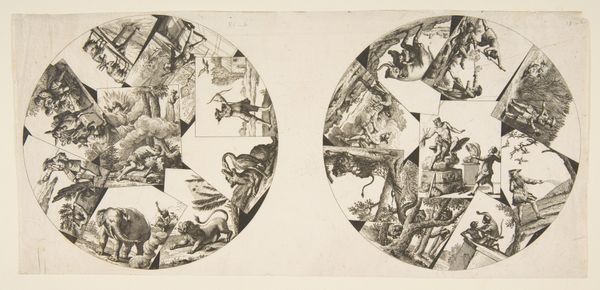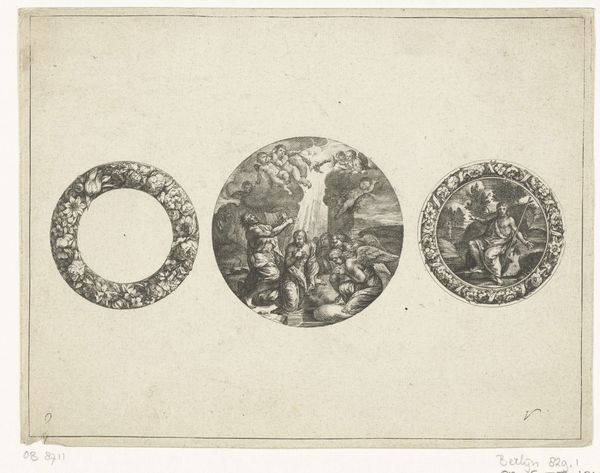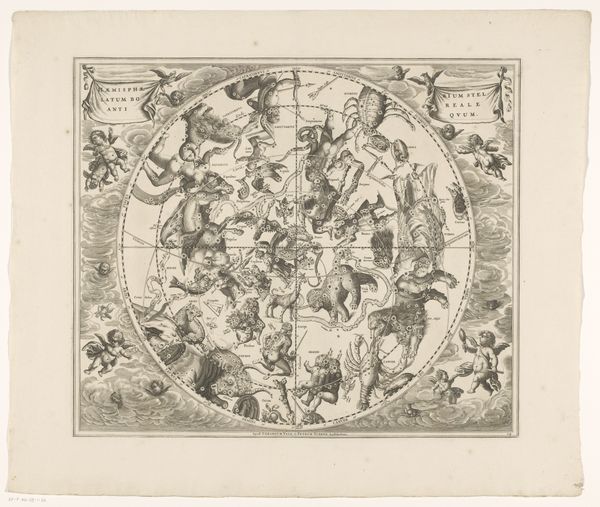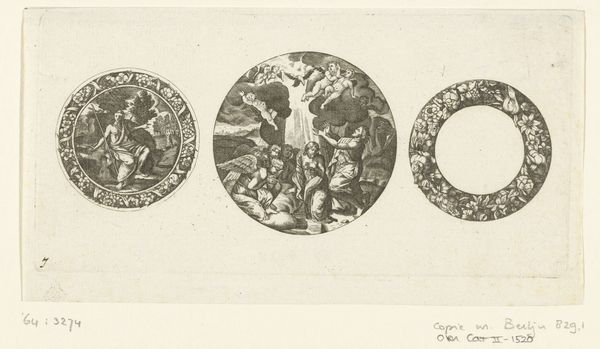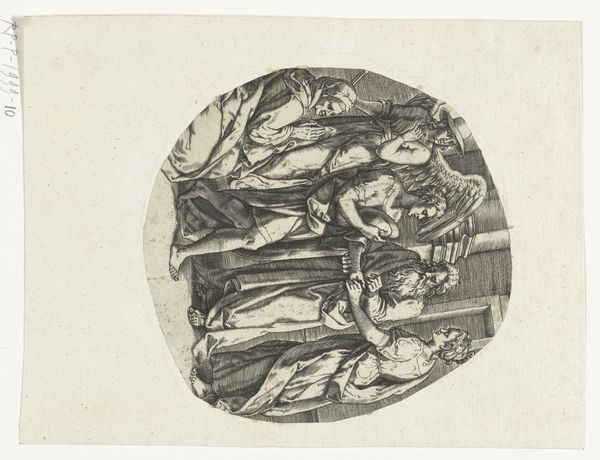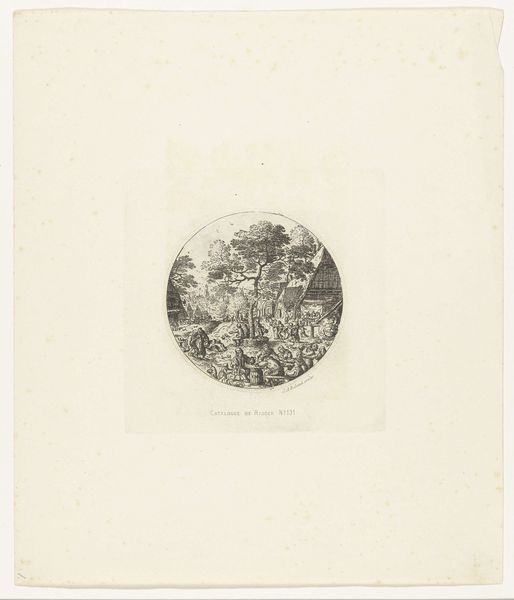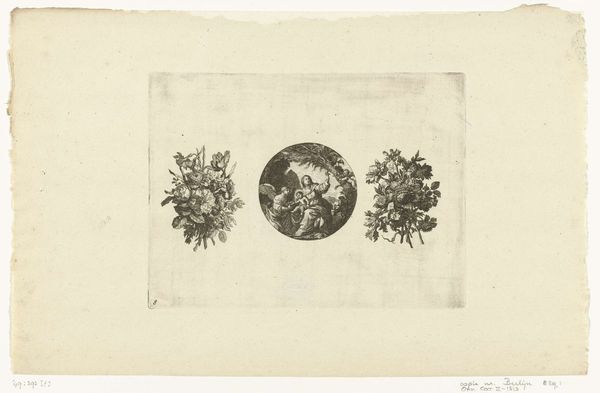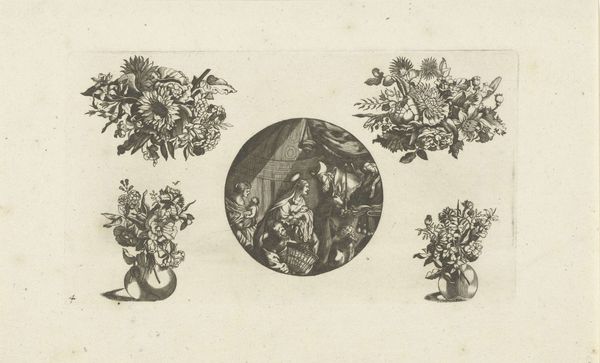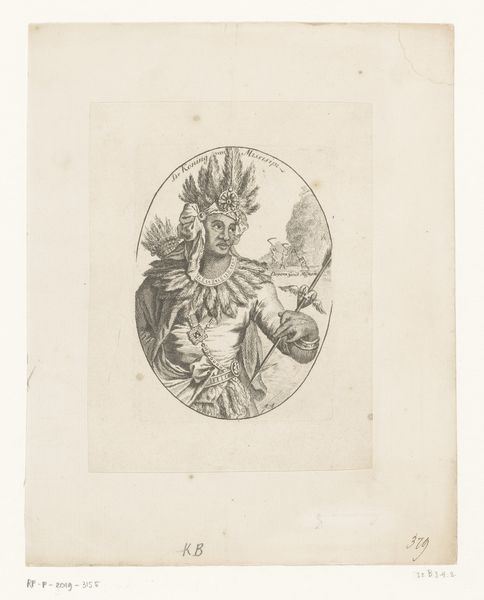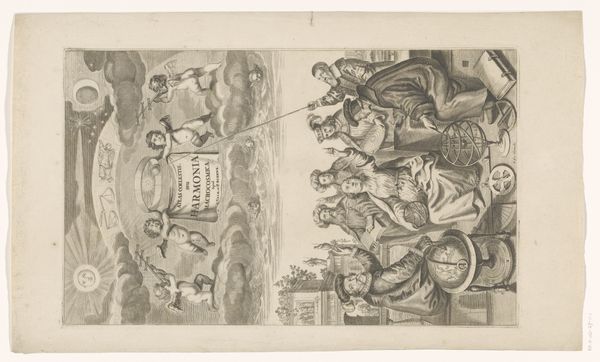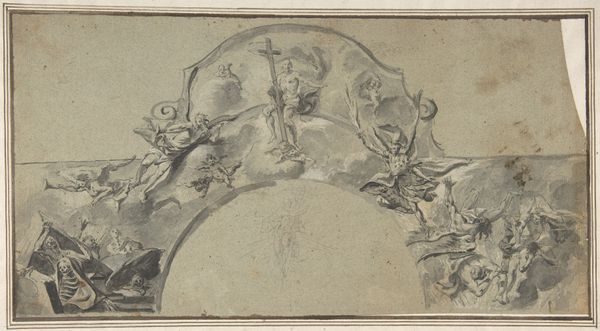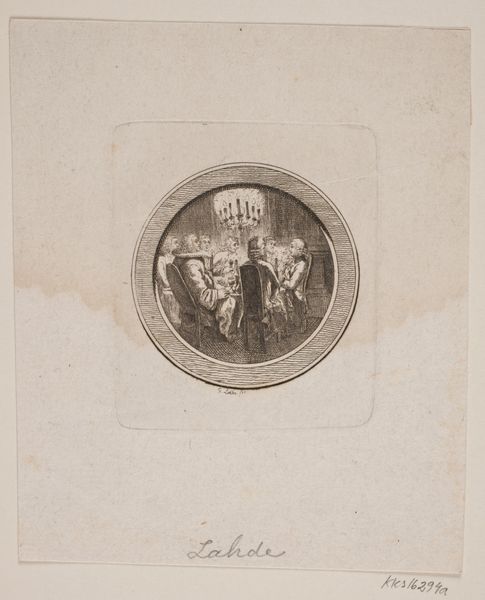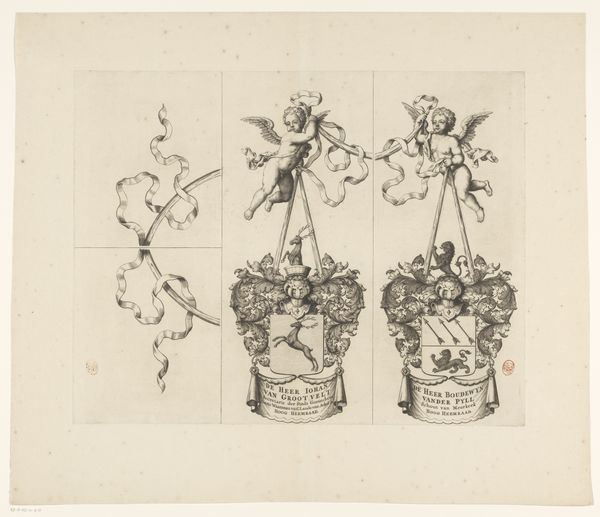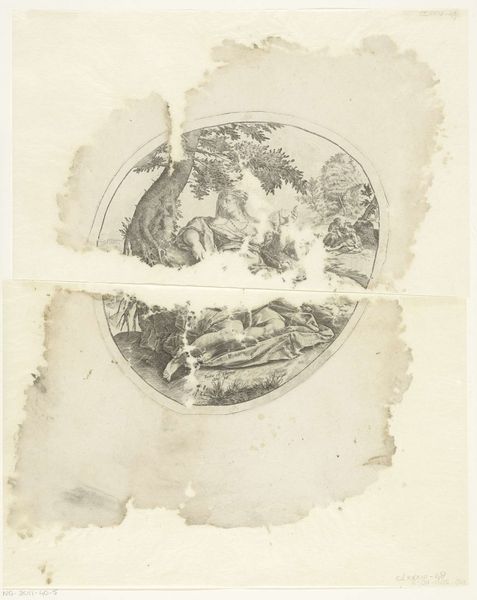
Designs for Plates Taken from Oudry's Illustrations to La Fontaine's Fables 1755 - 1790
0:00
0:00
drawing, print, etching, engraving
#
drawing
#
narrative-art
#
animal
# print
#
etching
#
pencil sketch
#
bird
#
coloured pencil
#
history-painting
#
engraving
Dimensions: sheet: 11 7/16 x 6 9/16 in. (29 x 16.7 cm)
Copyright: Public Domain
Curator: Here we have a fascinating sheet of etchings and engravings: "Designs for Plates Taken from Oudry's Illustrations to La Fontaine's Fables." Created between 1755 and 1790, this work is now housed at the Metropolitan Museum of Art. Editor: It strikes me as incredibly ornate. The arrangement of the scenes within the circles feels almost like a kaleidoscope, fragmenting the narratives, making it difficult to fully grasp. The starkness of the etching adds a graphic quality, almost like a study in contrasting tones. Curator: Oudry’s fables became deeply embedded in French cultural identity, reproduced in countless editions, influencing generations of artists and readers. These particular studies were preliminary sketches or alternative designs, intended for the production of plates for luxury dishware and possibly other decorative objects. Editor: So these aren’t just standalone illustrations, but also potential templates for applied art. Interesting. I’m immediately drawn to the tension between the chaos of the individual vignettes, scattered like shards, and the contained structure of the circles themselves. It makes the images feel like they are bursting from their container. Curator: Precisely, the circular form emphasizes the performative and moral dimensions of the stories depicted within, creating a microcosmic view of social customs of the time. Take a look at the details – each image offers glimpses into specific class relations through symbolic figures and settings. Editor: The stark monochromatic palette draws my attention to the intricacy of the linework, with variations in weight and density helping differentiate forms and generate contrast. Despite being rendered on a small scale, Oudry manages to convey the drama and emotion of the scenes through sophisticated composition and staging of figures. Curator: These images were specifically catered to aristocratic tastes and provided commentary on governance, morals and ideals while gently legitimizing their social standing through carefully crafted allegories. The very fact that this level of artistry went into creating plates intended for dining emphasizes the status of the commissioning clients. Editor: Seeing it all together now, I admire how Oudry captured the essence of these fables. I’m starting to see the fragments themselves as little puzzles that invite viewers to pause, to question what’s beyond what’s seen at first glance, ultimately making one focus on storytelling as both visually engaging and thoughtfully profound. Curator: Indeed, Oudry offers insight into the complex network of patronage, artistic production, and societal influence in eighteenth-century France, offering an experience far richer than simple fable retelling.
Comments
No comments
Be the first to comment and join the conversation on the ultimate creative platform.
